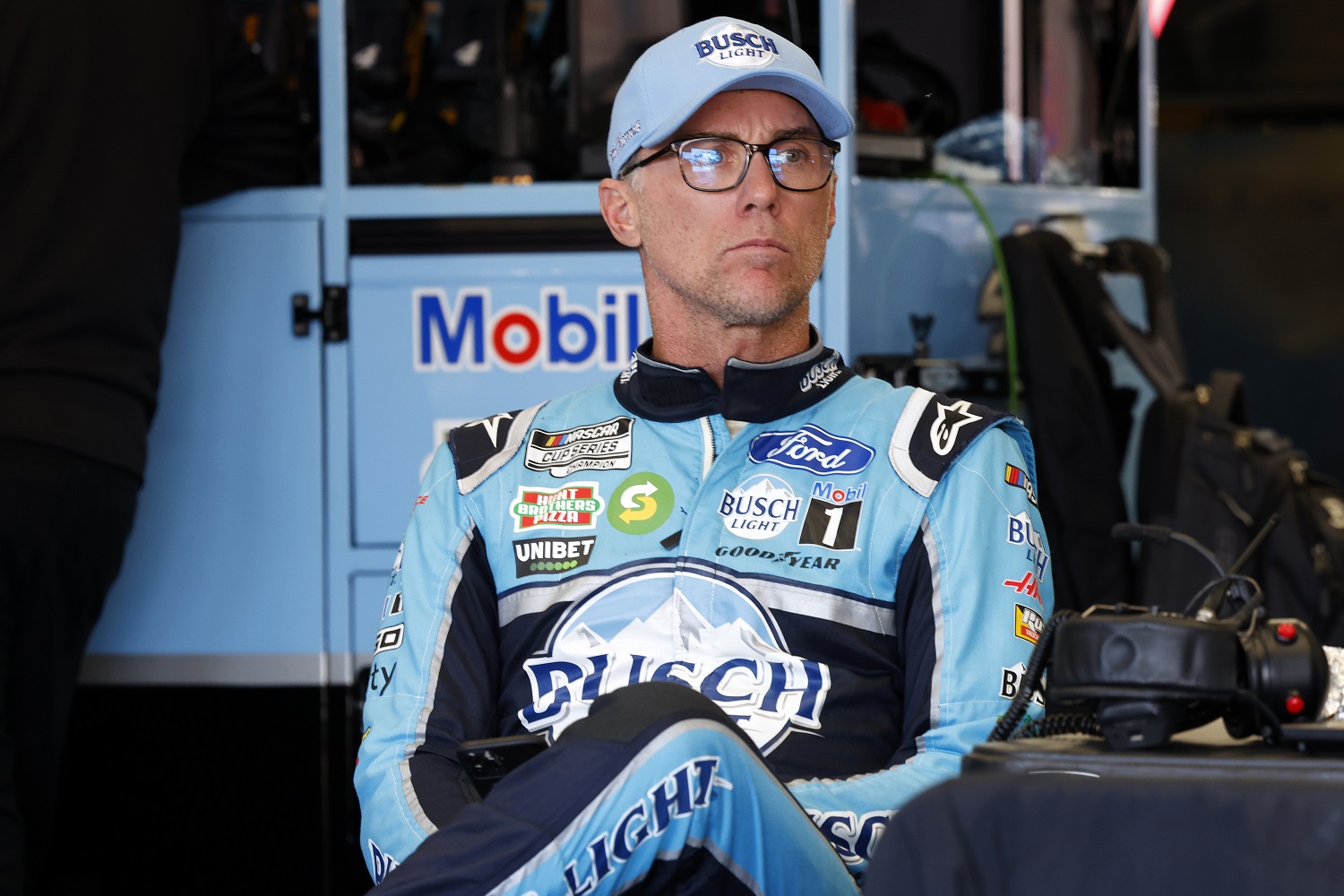NASCAR
Kevin Harvick, Kyle Busch, and Joey Logano Have the Most to Lose in the Switch to NASCAR’s Next Gen Car

The one topic discussed more than all others in the NASCAR Cup Series offseason is the impending arrival of the Next Gen car. With nothing to go on but a few rounds of testing, it is impossible to know which drivers and teams will benefit from its arrival. But it’s perfectly understandable that Kevin Harvick, Kyle Busch, and Joey Logano will be the drivers most disappointed to see the Gen 6 car drive off into retirement.
The Gen 6 car became NASCAR’s much-needed bridge to the future

NASCAR mercifully brought an end to the Car of Tomorrow (CoT) in 2013 with its Gen 6 car. Although the CoT was a significant step forward in terms of safety enhancements, few drivers and teams considered it racing-friendly.
Planning for the CoT began shortly after Dale Earnhardt’s death at the 2001 Daytona 500. It arrived in January 2006 with a goal to start using it the following year.
Almost from the moment of its debut at Bristol in 2007, insiders looked forward to replacing it. Although drivers appreciated safety features that included moving the seat four inches to the right, the designers’ use of cookie-cutter templates created additional drag and negated some of the skill factor in driving. It didn’t take fans long to catch on to the flaws.
The Gen 6 car that arrived in 2013 cleaned up some of the key issues, including adopting a body design that more closely resembled showroom models. With each successive season in the early years, NASCAR tweaked the downforce and aerodynamic setups, finally reaching a point midway through the car’s life cycle at which drivers felt they had a reasonable ability to execute passes as in the old days.
Kevin Harvick, Kyle Busch, and Joey Logano have the most to lose with the Next Gen switch
The people behind the Motorsports Analytics website have brought the same sort of research to NASCAR that Bill James brought to Major League Baseball with his groundbreaking calculations and projections. Probably its best-known work is what the site calls Production in Equal Equipment Rating (PEER). The idea is to strip out variables like team and manufacturer strength to cut to the bottom line of determining the best drivers.
Some of the website’s most valuable data reside behind a paywall, but NBC Sports assembled the data from the nine years of the Gen 6 car to determine which drivers got the most out of the equipment. It’s not a great leap to suggest that those are the same drivers who’ll be hurt most by the Next Gen car. In the short term, everyone is starting from scratch with new technology and should arrive at Speed Weeks in February approximately equal to the rest of the competition.
NBC’s examination breaks the nine-season Gen 6 era down further by comparing drivers at each age to find the “champion” for that age. In other words, PEER should be able to assess whether 28-year old Kyle Larson had a better season in 2021 than 28-year-old Joey Logano did in 2018 or Kyle Busch did at that age in 2013.
Among the conclusions:
- Kevin Harvick’s past four seasons, at ages 42-45, were better than any other driver performed in the Gen 6 era at those same ages.
- Joey Logano, 31, and Kyle Busch, 36, dominated the PEER data in the 24-to-34 demographic.
Drilling down into the numbers for NASCAR Cup Series drivers
Kyle Larson is one reason to embrace Motorsports Analytics’ PEER data. The website asserted that he had the best 21- and 23-year-old seasons, in 2014 and ’16, respectively, of any driver in the Gen 6 era. In fact, his rookie season surpassed what Jeff Gordon and Kyle Busch did at the same age.
This past season, Larson won the era’s 28-year-old age group with his dominating, 10-win season and NASCAR Cup Series championship. With Joey Logano just three years older, the numbers hint at the possibility of the two perhaps staging a long-term battle.
Logano posted the best PEER number for ages 24-26 and then again in 2019 as a 29-year-old. Any number above 3.0 is noteworthy, and Logano’s average for the four seasons was 3.361. Most interestingly, Logano won the Cup Series championship in 2018, but his PEER figure was a relatively low 3.014, which reinforces that winning isn’t everything under the formula.
NBC’s take on the data is that no one benefitted from the Gen 6 car more than Kevin Harvick. He scored 39 victories in the model’s nine seasons after 19 victories from 2001-12. There wasn’t an abundance of older drivers during the Gen 6 era, but Harvick’s average PEER score of 3.924 for the past four seasons absolutely dominated the age range.
The Next Gen car will be the fourth model Harvick has driven in his Cup Series career. If he posts stellar results in a 2022 season during which something closer to parity should be the rule, it will only add to his legacy in the sport.
Like Sportscasting on Facebook. Follow us on Twitter @sportscasting19.











